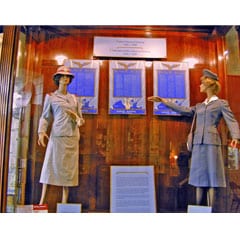Cadet Nurse Corps

World War II brought a need for nurses at home and in the military service. The Cadet Nurse Corps was established by the Bolton Act. Under this 1943 act, federal funds were provided for the education of undergraduate nursing students.
The funding encouraged young women to enter schools of nursing by offering tuition and fees, books, a monthly stipend of $15 to $30, and Cadet Nurse Corps uniforms.
On July 1, 1943, the Kahler School of Nursing was approved by the United States Public Health Service to offer its students the opportunity to join the Nurse Corps. The nursing program was accelerated to be completed in 30 months instead of the usual 36 months, but no part of the curriculum or practical experience was deleted.
The last six months of training was the senior cadet period. The cadets chose from a variety of training experiences in the Army, Navy, Veterans Administration, U.S. Public Health Service and Indian Bureau. They could also request to train at other authorized schools for experience in the specialty areas of psychiatrics or communicable diseases.
The Cadet Corps had uniforms for winter and summer. The winter uniform was a gray wool flannel suit with red epaulets, a gray wool purse, hats and black shoes. The summer uniform was gray seersucker with a white purse, lightweight felt hats, and white or black shoes.
The United States Public Health Service closed the Cadet Corps in 1948. At that time 125,000 women served as cadet nurses, 407 of whom were from the Kahler School of Nursing.